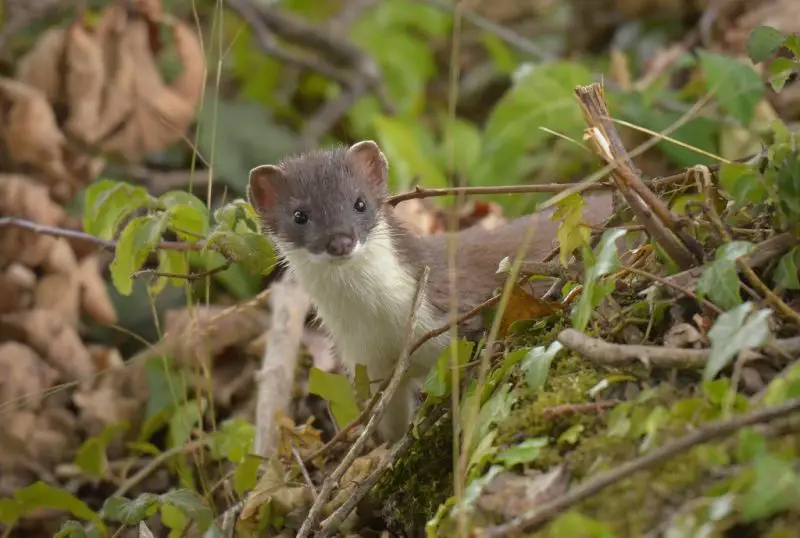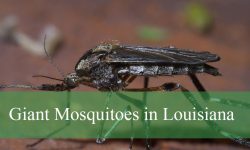Montana’s forests contain a wide range of predators, but few are as overlooked—and as biologically remarkable—as the weasels that move silently through understory vegetation, snow tunnels, river corridors, and subalpine slopes. While small in body size, they possess some of the most efficient predatory adaptations among mammals in North America. Their speed, metabolic intensity, territorial behavior, and hunting precision make them dominant micromammal predators across Montana’s woodlands. Yet despite their ecological importance, weasels in Montana forests are seldom seen by hikers, hunters, or even local residents, largely because they live fast, stay hidden, and move primarily in dense cover.
Montana’s forest ecosystems, shaped by long winters, heavy snow, oscillating rodent cycles, and dramatic elevation contrasts, create unique pressures that influence weasel behavior. The mustelids living here—small members of the weasel family—display ecological patterns that differ significantly from the same species in more moderate regions. Their hunting style shifts with prey availability; their movements adjust to snow depth and seasonal temperatures; and their survival depends on behavioral agility that few animals of similar size can match.
This article explores the scientific truth about weasels in Montana—their biology, ecology, seasonal behavior, habitat use, hunting strategies, and the surprising characteristics that make them far more mysterious than most people realize.
Weasel Species of Montana’s Forests

Montana hosts several mustelid species, but the primary “true weasels” found across forested habitats include:
• Least Weasel
The smallest mustelid in North America, extremely fast and specialized for hunting small rodents.
• Short-tailed Weasel (Ermine)
A common forest predator that turns white in winter and excels in subnivean (under-snow) hunting.
• Long-tailed Weasel
A larger species that occupies diverse forest edges, meadows, river valleys, and foothill zones.
Những loài khác thuộc họ Mustelidae như marten, mink, fisher đôi khi sống ở rừng Montana, nhưng bài này tập trung đúng nhóm “weasel” truyền thống: small-bodied, high-speed predators adapted to rodent-rich environments.
Physical and Physiological Adaptations
Weasels survive in Montana’s forests thanks to a suite of specialized biological traits.
Body Shape Built for Precision Hunting
Weasels possess long, cylindrical bodies with short legs, allowing them to enter burrows, run through dense forest litter, and pursue rodents into underground tunnels. This shape enables them to exploit prey populations that larger predators cannot reach.
High Metabolic Rates
Few mammals have a metabolic rate as high as a weasel’s. Their energy demands force them to hunt frequently—often multiple times per day. In Montana winters, this metabolic intensity becomes both an advantage and a risk: it helps them maintain body heat but requires constant access to prey.
Seasonal Molting and Camouflage
Short-tailed Weasels and Least Weasels undergo seasonal color changes. In winter, they turn white and blend with snow, avoiding detection from hawks, owls, coyotes, and lynx while ambushing rodents under snow layers. In summer, their brown coat matches soil and vegetation, offering camouflage in leaf litter.
Teeth and Bite Mechanics
Weasels possess sharp carnassial teeth ideal for consuming flesh, bones, and tissues quickly. Their bite is specifically adapted for killing rodents through the back of the skull, ensuring instant immobilization.
Hunting Strategies in Montana Forests
Weasels are primarily carnivorous hunters with strong instinctive drive, shaped by the cold, rodent-driven ecosystems of Montana.
Subnivean Predation
Montana winters create thick layers of snow, beneath which rodents travel through tunnel networks. Weasels take full advantage, entering these snow tunnels to pursue voles, mice, and shrews. Their narrow bodies and high mobility allow them to hunt directly in the rodents’ insulated environment.
Opportunistic Scavenging
Although they are efficient hunters, weasels occasionally consume carrion, especially during deep-winter resource shortages. They may feed on carcasses left by owls, foxes, martens, or raptors.
Burrow Raiding
Weasels enter rodent nests and consume multiple prey in a single raid. Their agility inside burrows gives them access to juvenile rodents that would otherwise be protected from predators.
Arboreal Movement
Long-tailed Weasels can climb trees to pursue squirrels or birds. While not completely arboreal, they use fallen logs, trunk cavities, and branches efficiently.
Surplus Killing
Weasels sometimes kill more prey than they immediately need, storing extra carcasses in tunnels or caches. In Montana’s forests, this occurs most often in late fall when rodent populations peak.
Habitat Use and Forest Distribution
Montana’s forests vary greatly between regions, and weasels occupy different habitat types depending on prey availability, canopy density, and snow conditions.
Conifer Forests
Spruce, fir, and lodgepole pine forests provide dense ground cover, abundant snow tunnels, and rodent populations. Short-tailed Weasels dominate these areas.
Riparian Forests
River corridors host high densities of voles, mice, amphibians, and ground-nesting birds. Long-tailed Weasels frequently hunt in these environments.
Mixed Forest Edges
Least Weasels exploit grassy edges near forests where vole populations surge. They also thrive near meadows and clearcuts with regenerating vegetation.
Subalpine Forests
At higher elevations, weasels navigate areas with deep snowpack and lower winter temperatures. Their seasonal color change provides crucial camouflage in these white landscapes.
Seasonal Behavior and Adaptation Cycles
Montana’s intense seasonal variability forces weasels to adjust behavior each season.
Spring
As the snow melts, rodents emerge from subnivean tunnels, and prey abundance increases. Weasels begin exploring new hunting territories and males expand ranges searching for mates.
Summer
Prey is abundant, especially juvenile rodents, ground-nesting birds, and insects. Weasels devote considerable time to raising young and teaching them hunting skills.
Fall
Rodent numbers fluctuate sharply depending on weather and mast cycles. Weasels increase hunting frequency to build fat reserves for winter. They molt into thicker fur and, for some species, begin transitioning to their white winter coats.
Winter
This is the most challenging season. Weasels rely on subnivean tunnels, stored carcasses, and highly precise hunting skills. Color-changing weasels gain camouflage advantages. Winter survival is tightly tied to rodent cycles.
Population Dynamics and Rodent Cycles
Weasel populations in Montana rise and fall depending on prey availability.
Vole Cycle Dependence
Vole populations follow cyclical booms and crashes influenced by climate patterns, plant growth cycles, and snow conditions. When rodent populations surge, weasel numbers increase significantly the following year.
Winter Mortality
Harsh winters affect juvenile survival. If prey becomes scarce, young weasels may starve due to their extremely high metabolism.
Territory Expansion
When prey declines, weasels widen their hunting areas. Some individuals disperse long distances, moving between forest patches, valleys, or across snow-covered terrain.
Reproduction and Life Cycle
Weasel reproduction aligns with Montana’s seasonal prey cycles.
Mating Season
Weasels typically breed in late spring or early summer. Males roam widely through forest understory and scent-mark territory.
Delayed Implantation
One remarkable trait among weasels is delayed implantation—fertilized eggs pause development for months before continuing growth. This ensures that young are born when prey is abundant.
Kits and Development
Litters range from 3–10 kits. Young weasels develop quickly, becoming independent hunters within weeks. Their learning process involves imitation, play-hunting, and exploring forest burrows.
Predator-Prey Interactions and Risks
Though fierce hunters, weasels face threats from larger forest predators.
Avian Predators
Owls—especially Great Horned Owls—are major threats. Hawks also prey on weasels when they are exposed in open terrain.
Mammalian Predators
Coyotes, foxes, bobcats, and martens hunt weasels when opportunities arise. Because weasels are slender and fast, most predation occurs during surprise encounters.
Environmental Risks
Extreme cold, deep snowpack, and food shortages are frequent causes of winter mortality.
Ecological Roles of Weasels in Montana Forests
Weasels play several crucial roles in maintaining forest balance.
Rodent Population Control
By hunting intensively, weasels regulate vole and mouse populations. This indirectly influences:
-
forest regeneration
-
seedling survival
-
insect outbreaks
-
crop damage near forest edges
Trophic Cascade Influence
Weasels help maintain balance in predator-prey webs. Their presence impacts the behavior of rodents, reducing overgrazing and controlling disease spread.
Snow Tunnel Ecosystem Impact
Their subnivean movement modifies snow tunnels, creating microchannels that other small animals use for shelter or movement.
Why Weasels Are Rarely Seen
Weasels are abundant in many Montana forests but seldom seen for several reasons:
-
They move at high speed through dense vegetation.
-
Their home ranges are large and they seldom stay long in one area.
-
Camouflage allows them to blend into forest shadows.
-
They are active when human presence is minimal.
Even wildlife biologists studying mustelids frequently rely on remote cameras, snow tracking, and scat surveys rather than direct observation.
Myths and Misconceptions About Weasels
Although small, weasels have been surrounded by myths.
Myth: Weasels are aggressive toward humans
Reality: They avoid humans and pose no natural threat.
Myth: Weasels hunt for sport
Reality: Surplus killing is instinctive preparation for food shortages.
Myth: Weasels are uncommon in Montana
Reality: They are widespread but extremely difficult to observe.
Myth: Weasels only eat rodents
Reality: They also consume birds, insects, amphibians, and carrion when needed.
Frequently Asked Questions (FAQ)
Are weasels common in Montana forests?
Yes. They are widespread but rarely seen because of their small size and secretive behavior.
What do weasels primarily eat?
Mostly rodents, especially voles and mice, but they also hunt birds, insects, and shrews.
Do weasels turn white in winter?
Short-tailed Weasels and Least Weasels molt into white coats in winter for camouflage.
How do weasels survive harsh winters?
By hunting under snow, using rodent tunnels, conserving body heat through dense fur, and relying on cached prey.
Are weasels dangerous?
Not to humans. They are focused exclusively on small prey.
What habitats do weasels prefer?
Dense forests, forest edges, riparian woodlands, and subalpine meadows with high rodent densities.
Do weasels migrate?
No. They remain in Montana year-round but shift ranges with prey availability.
Which predators hunt weasels?
Owls, hawks, coyotes, foxes, bobcats, and occasionally martens.
Final Thoughts
Weasels in Montana’s forests represent one of the most efficient, specialized, and ecologically important predator groups in the region. Their ability to navigate snow tunnels, rapidly adjust to prey cycles, and blend into dense vegetation makes them both highly successful hunters and incredibly difficult for humans to observe. Although small, they shape forest ecosystems by regulating rodents, influencing vegetation, and contributing to complex trophic interactions.
Understanding weasels in Montana reveals a deeper truth about the state’s forests: the quiet rhythms of the ecosystem depend heavily on small, hidden predators whose behaviors unfold beneath logs, inside snow tunnels, and within the dim understory. These animals remind us that some of the most influential wildlife in Montana are not the largest or the loudest but the ones that move swiftly, silently, and almost invisibly through the forest.






